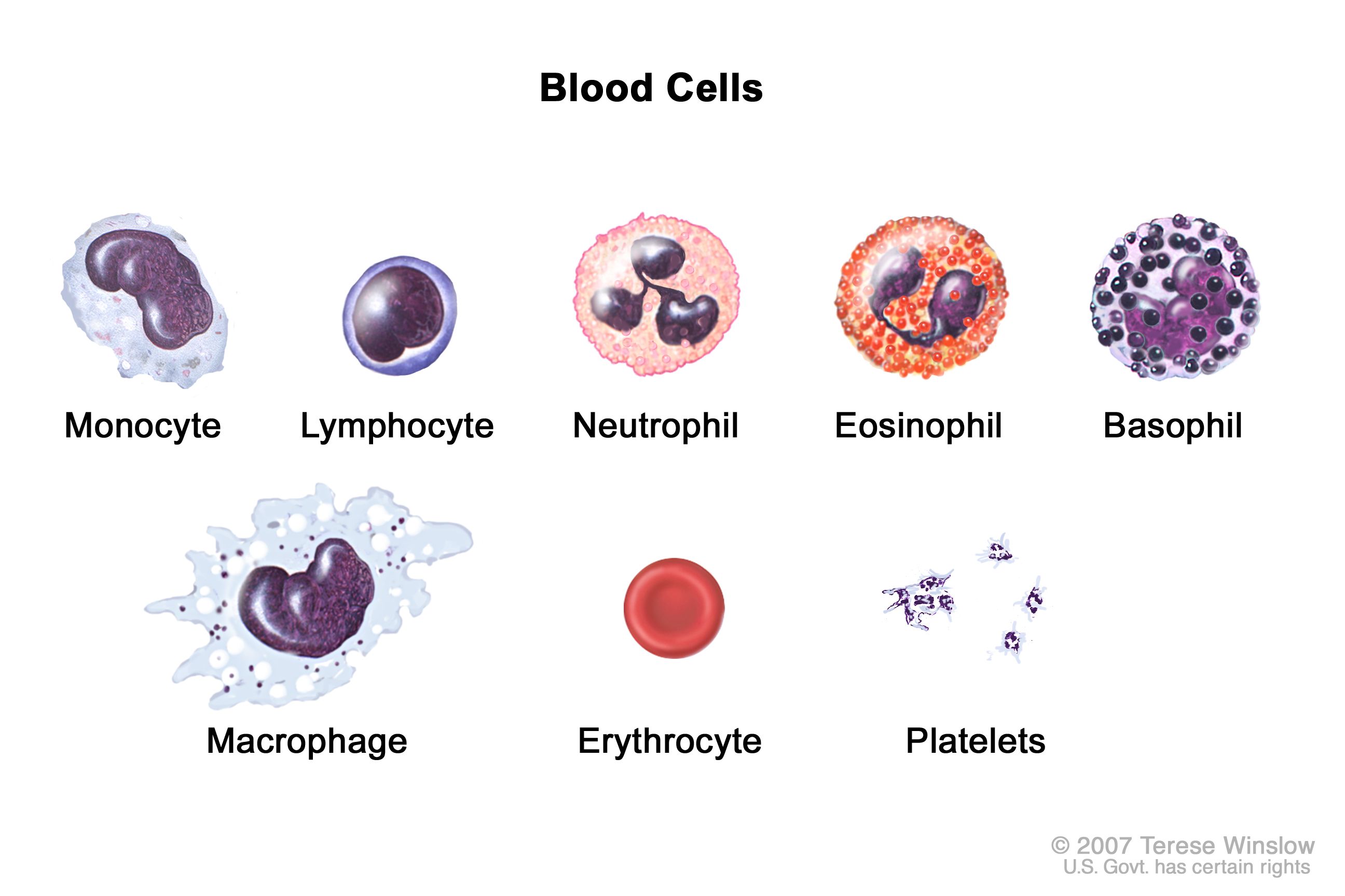Neutrophil Cell
Jump to navigation
Jump to search
A Neutrophil Cell is a Granulocyte that ...
- …
- Counter-Example(s):
- See: Erythrocytes, Platelets, Cytoplasm, Giemsa Stain, Immune System, Phagocytosis, Granulocyte, White Blood Cell, Innate Immune System, Stem Cell, Bone Marrow.
References
2021
- (Wikipedia, 2021) ⇒ https://en.wikipedia.org/wiki/Neutrophil Retrieved:2021-8-5.
- Neutrophils (also known as neutrocytes or heterophils) are the most abundant type of granulocytes and make up 40% to 70% of all white blood cells in humans. They form an essential part of the innate immune system, with their functions varying in different animals. They are formed from stem cells in the bone marrow and differentiated into subpopulations of neutrophil-killers and neutrophil-cagers. They are short-lived and highly motile, or mobile, as they can enter parts of tissue where other cells/molecules cannot. Neutrophils may be subdivided into segmented neutrophils and banded neutrophils (or bands). They form part of the polymorphonuclear cells family (PMNs) together with basophils and eosinophils. The name neutrophil derives from staining characteristics on hematoxylin and eosin (H&E) histological or cytological preparations. Whereas basophilic white blood cells stain dark blue and eosinophilic white blood cells stain bright red, neutrophils stain a neutral pink. Normally, neutrophils contain a nucleus divided into 2–5 lobes. Neutrophils are a type of phagocyte and are normally found in the bloodstream. During the beginning (acute) phase of inflammation, particularly as a result of bacterial infection, environmental exposure, and some cancers, neutrophils are one of the first responders of inflammatory cells to migrate toward the site of inflammation. They migrate through the blood vessels and then through interstitial tissue, following chemical signals such as interleukin-8 (IL-8), C5a, fMLP, Leukotriene B4, and H2O2 in a process called chemotaxis. They are the predominant cells in pus, accounting for its whitish/yellowish appearance.[1] Neutrophils are recruited to the site of injury within minutes following trauma and are the hallmark of acute inflammation; however, due to some pathogens being indigestible, they might not be able to resolve certain infections without the assistance of other types of immune cells.
- ↑ Cite error: Invalid
<ref>tag; no text was provided for refs namedBarer 2012 pp. 168–173
